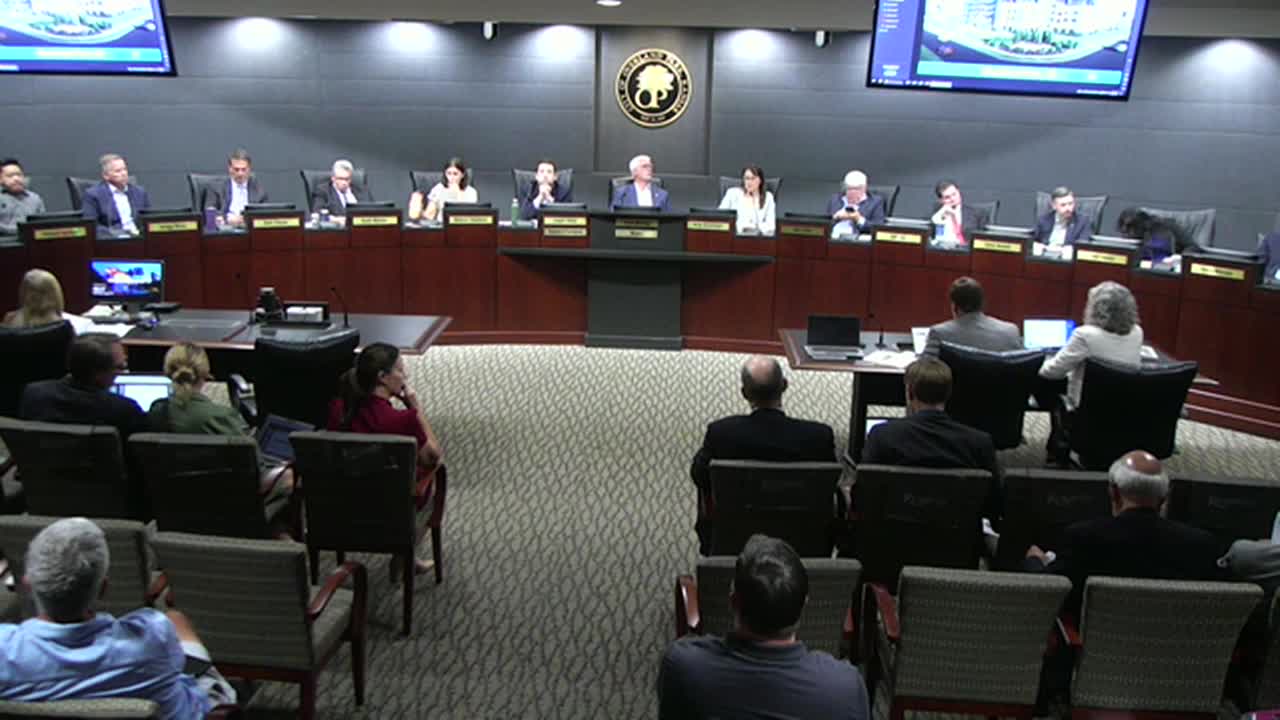City plans ambitious housing project to meet growing demand
August 19, 2024 | Overland Park, Johnson County, Kansas

This article was created by AI summarizing key points discussed. AI makes mistakes, so for full details and context, please refer to the video of the full meeting. Please report any errors so we can fix them. Report an error »

During a recent government meeting, Clover Architects presented a significant residential development project that has been in the planning stages for several months. The project, which encompasses approximately 35 acres, is divided into two main components: RP 6 and RP 3.
The RP 6 section will feature a predominantly four-story building, with 75% of the units being one-bedroom apartments and 25% two-bedroom units. The design aims to create a visually appealing structure at the intersection of 135th Street and Quivira, incorporating architectural elements intended to make the building memorable. Notably, the design includes a fifth story at the corner of the building, which is positioned on a downhill slope, enhancing its visual impact.
The RP 3 section of the project will consist of two-story buildings with pitched roofs, with an intended distribution of approximately 70% one-bedroom and 30% two-bedroom units. The height of these buildings will range from 31 to 34 feet, aligning with the scale of typical two-story homes in the area. The development is designed to preserve significant tree stands along the property line, contributing to the neighborhood's aesthetic and environmental quality.
Throughout the meeting, council members expressed concerns regarding the feasibility of incorporating commercial space into the RP 6 building. The developer explained that while there is a thriving commercial corridor along 135th Street, the demand for new retail space is currently low, making it financially challenging to include commercial units in the residential project. Instead, the focus remains on addressing the pressing need for housing in the area, as occupancy rates for existing apartments are reportedly above 95%.
The project received unanimous support from both the Site Plan Review Committee and the Planning Commission, indicating a strong consensus on its potential benefits for the community. The developer emphasized that increasing the residential population in the area could ultimately support local businesses by driving demand for services and amenities.
As the meeting concluded, the council appeared poised to move forward with the project, recognizing its alignment with the city's housing goals and the positive impact it could have on the local economy.
The RP 6 section will feature a predominantly four-story building, with 75% of the units being one-bedroom apartments and 25% two-bedroom units. The design aims to create a visually appealing structure at the intersection of 135th Street and Quivira, incorporating architectural elements intended to make the building memorable. Notably, the design includes a fifth story at the corner of the building, which is positioned on a downhill slope, enhancing its visual impact.
The RP 3 section of the project will consist of two-story buildings with pitched roofs, with an intended distribution of approximately 70% one-bedroom and 30% two-bedroom units. The height of these buildings will range from 31 to 34 feet, aligning with the scale of typical two-story homes in the area. The development is designed to preserve significant tree stands along the property line, contributing to the neighborhood's aesthetic and environmental quality.
Throughout the meeting, council members expressed concerns regarding the feasibility of incorporating commercial space into the RP 6 building. The developer explained that while there is a thriving commercial corridor along 135th Street, the demand for new retail space is currently low, making it financially challenging to include commercial units in the residential project. Instead, the focus remains on addressing the pressing need for housing in the area, as occupancy rates for existing apartments are reportedly above 95%.
The project received unanimous support from both the Site Plan Review Committee and the Planning Commission, indicating a strong consensus on its potential benefits for the community. The developer emphasized that increasing the residential population in the area could ultimately support local businesses by driving demand for services and amenities.
As the meeting concluded, the council appeared poised to move forward with the project, recognizing its alignment with the city's housing goals and the positive impact it could have on the local economy.
View full meeting
This article is based on a recent meeting—watch the full video and explore the complete transcript for deeper insights into the discussion.
View full meeting
